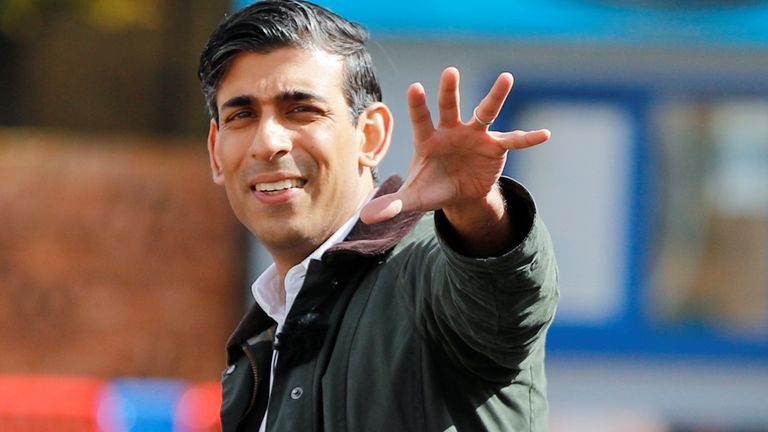UK borrowing fell to £24.3bn last month as the government spent less money on furlough and saw a boost from VAT and fuel tax, official figures show.
Borrowing – the difference between how much the government spends and how much it receives from taxes and other income – was still at its second-highest level for May on record as the COVID-19 pandemic continues to weigh on the public sector.
But it was in better shape than at the same time last year, when a shortfall of £43.8bn was recorded, according to figures from the Office for National Statistics (ONS).
‘Thank goodness’ for recovery – but longer term relatively weak, says BoE governorThat was partly thanks to a £7.5bn increase in receipts – including £2.3bn more from VAT and £1.3bn more from fuel duty compared with a period last year when spending and driving activity were muted during the first lockdown.
Meanwhile, spending by central government was £10.9bn lower, partly thanks to the £2.5bn outlay on the furlough scheme being only about a quarter of its level in May 2020.
AdvertisementResponding to the figures, Rishi Sunak, the chancellor, stressed that it was important “over the medium term to get the public finances on a sustainable footing”.
“That’s why at the budget in March I set out the difficult but necessary steps we are taking to keep debt under control in the years to come,” Mr Sunak said.
More from Business COVID-19: Quarantine-free travel for fully-vaccinated ‘absolutely something’ government working on – Hancock News UK says ‘early stage’ discussions with BT Sport will not be pursued Aston Martin sues Swiss car dealer over deposits on £2.5m Valkyrie model Morrisons takeover latest, lower government borrowing and Andy Murray’s new investment Sotheby’s will accept cryptocurrency for first time as payment for rare diamond Dating app Bumble closes for a week to let staff tackle ‘collective burnout’:: Listen and subscribe to The Ian King Business podcast here.
The borrowing figure was slightly lower than the £26bn that had been pencilled in by economists and also down from £29.1bn in April this year.
There was also a revision to the full-year deficit for 2020-21, shaving £1.1bn off the total to take it just below the £300bn mark to £299.2bn – though this still represents the highest level of borrowing since the Second World War.
But the scale of the debt burden continues to pile up – now standing at £2.2trn, or 99.2% of UK GDP, which is the highest ratio since 1962.
That underlines the scale of the challenge facing Mr Sunak, whose hands are tied by Conservative pledges to voters on income tax and pensions.
Timber, steel and cement spark 100% inflationThe figures come a day after Downing Street squashed speculation that it may suspend the “triple lock” on state pensions – a pledge that they will rise annually by either 2.5%, the rate of wage growth, or inflation, whichever is highest.
The official measure of wage growth has been boosted by changes to the composition of the workforce during the pandemic – and it has been suggested that this anomaly could mean a £4bn increase in pensions if the government adheres to the triple lock.
On Monday, the prime minister’s spokesman said that the government remained committed to the policy.
Isabel Stockton, research economist at the Institute for Fiscal Studies said: “Today’s figures continue the pattern of borrowing in 2021-22 coming in below that seen last year, but significantly above that seen in the same months in any pre-pandemic year.”
Borrowing of £53.4bn so far in the first two months of the financial year is 41% lower than a year earlier but more than three times higher than for the same period in 2019, before the pandemic struck.
“So borrowing over the last 12 months continues to fall, but is still running way above what would be sustainable over the medium-term,” Ms Stockton said.
